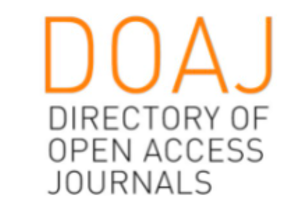EFFECTS OF THE WASHINGTON CONSENSUS ON THE MACROECONOMIC STABILITY OF B&H
DOI:
https://doi.org/10.1515/eoik-2017-0002Keywords:
Washington Consensus, unemployment, macroeconomic stability, the IMF, the crisisAbstract
With regard to the specific situation and problems in Bosnia and Herzegovina this paper will analyse the effects caused by adhering to the rules of the Washington Consensus, and thus will determine to which extent they have influenced the stability of the macroeconomic indicators in Bosnia and Herzegovina and will explain how the rules affect the stability of macroeconomic indicators of Bosnia and Herzegovina. The main thesis of the Washington Consensus is that by following the measures of the same the macroeconomic situation in the country becomes more stabilised. However, stabilization often cannot sustain in the long term and this situation in the economy can be regarded as quasi-macroeconomic stability. The application of the Washington Consensus produces a quasi-macroeconomic stability of Bosnia and Herzegovina since the high level of unemployment exists due to a low inflation. Contrary to the neoliberal Washington Consensus profile, whose main goal is the maintenance of steady conditions in budgets through fiscal stabilization policies, the paper stresses the need to solve the permanent high unemployment rate as the main macroeconomic problem Bosnia and Herzegovina’s.
References
Davidson P., (2009). The Keynes Solution: The Path to Global Economic Prosperity, New York, SAD: Palgrave Macmillan
Kesner-Škreb, M. (2004). Washingtonski konsenzus, Finansijska teorija i praksa 28, Zagreb, Hrvatska: Institut za Javne financije
Raičević, B. (2008). Javne finansije, Beograd, Srbija: Centar za izdavačku djelatnost Ekonomskog fakulteta u Beogradu
Samuelson P. A., Nordhaus W. D., (2005). Economics, New York, SAD: McGraw-Hill
Stiglitz, J. (2004). Globalizacija i dvojbe koje izaziva, Zagreb, Hrvatska: Algoritam
Stiglitz, J. (2010). The Stiglitz Report: Reforming the International Monetary and Financial Systems in the Wake of the Global Crisis, New York, SAD: The New Press
Williamson, J., (1990). Latin American Adjustment: How much has happened? Vašington, SAD: Institute for International Economics
Serra N., Stiglitz J., (2008). The Washington Consensus Reconsidered: Towards a New Global Governance, Oxford, UK: Oxford University Press
Vines D., Gilbert C. L. (2004). The IMF and its Critics: Reform of Global Financial Architecture, Cambridge, UK: Cambridge University Press
Woods, N. (2006) The Globalizers: The IMF, the World Bank, and Their Borrowers, Vašington, SAD: Overseas Development Council 11. Congdon T. (2007). Keynes, the Keynesians and Monetarism, Cheltenham, UK: Edward Elgar
Abel, A. B., Bernanke, B. S. & Croushore, D. (2008). Macroeconomics, 6th ed., New York, SAD: Pearson
Coffey, P., Riley, R. J. (2006). Reform of the International Institutions: The IMF, World Bank and the WTO, Cheltenham, UK: Edward Elgar
Wray, L. R., Forstater, M. (2008). Keynes and Macroeconomics after 70 Years Critical Assessments of The General Theory, Cheltenham, UK: Edward Elgar
Park, Y.C. (2006). Economic Liberalization and Integration in East Asia – A Post-Crisis Paradigm, Oxford, UK: Oxford University Press
Boas, M., McNeill, D. (2004). Global Institutions and Development: Framing the World?, London, UK: Routledge
Broome, A. (2010). The Currency of Power: The IMF and Monetary Reform in Central Asia, Basingstoke, UK: Palgrave Macmillan
Annual Report Central Bank BiH, Sarajevo, 1999. – 2014. Central Bank BiH: www.cbbh.gov.ba (accessed 16.09.2015)
Agency for Statistics BiH: www.bhas.ba (accessed 11.06.2015)
MMF: Letter of Intent http://www.imf.org/external/country/bih/index.htm (accessed: September 2015.)
Downloads
Published
How to Cite
Issue
Section
License
Copyright (c) 2016 Oikos Institute - Research Centre

This work is licensed under a Creative Commons Attribution-NonCommercial-NoDerivatives 4.0 International License.




















